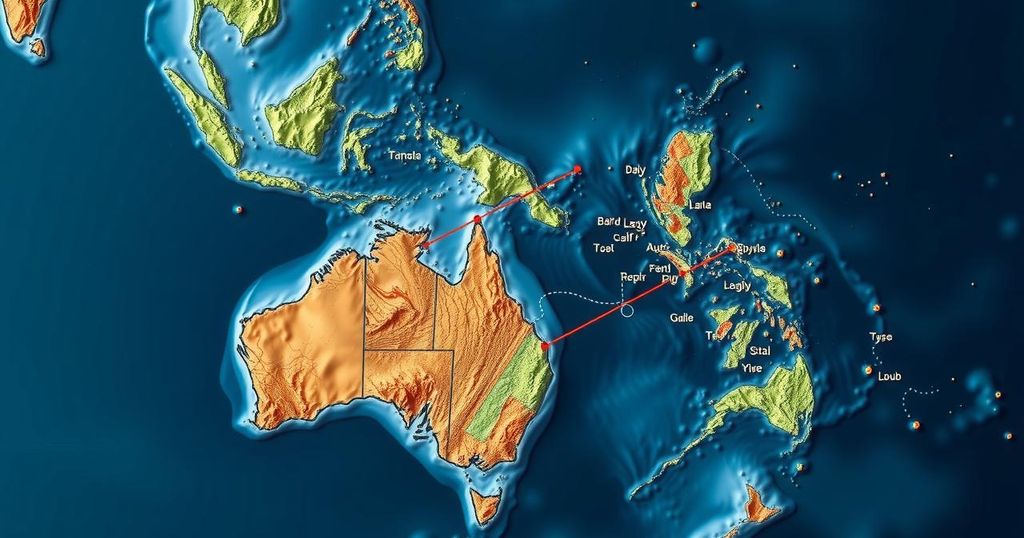Earthquakes in Australia, Indonesia, and Philippines: No Tsunami Threat Confirmed

On Wednesday morning, a series of earthquakes with magnitudes of 5.5 and 5.6 struck Indonesia and the Philippines, respectively, followed by a 3.6 quake near Port Hedland, Australia. No tsunami threat was identified. The Philippines, located on the “Ring of Fire,” frequently experiences seismic activity, yet there were no immediate reports of damage following these events.
On Wednesday morning, three earthquakes impacted Australia, Indonesia, and the Philippines, prompting updates from various geological agencies regarding seismic activity and tsunami warnings. The series began with a 5.5 magnitude earthquake near the Talaud Islands in Indonesia at approximately 3 a.m. local time. This was succeeded by a 5.6 magnitude tremor that struck the northern Philippines, as reported by the German Research Centre for Geosciences (GFZ), raising concerns about potential damages and aftershocks. Later in the morning, a 3.6 magnitude quake was recorded near Port Hedland in Western Australia around 8 a.m. AEDT, though the Bureau of Meteorology quickly confirmed that there was no tsunami threat associated with this event.
The depth of the Philippine earthquake was measured at 10 kilometers (6.2 miles), affecting the town of Bangui in Ilocos province, where local authorities have indicated there may be damage and aftershocks. Fortunately, as of the latest reports, no immediate damages were reported from the earthquake in either Indonesia or the Philippines. Earthquakes are a frequent occurrence in the Philippines, which is situated on the “Ring of Fire,” an area known for its high seismic activity due to tectonic movements.
Earthquakes are geological occurrences caused by the sudden release of energy in the Earth’s lithosphere, resulting in seismic waves. Australia, Indonesia, and the Philippines are regions influenced by tectonic plate movements, particularly the Pacific Plate, which contributes to the seismic activity experienced in these areas. The Philippines, positioned on the “Ring of Fire,” is particularly susceptible to earthquakes and volcanic eruptions. Simultaneously, regions such as Western Australia experience seismic events, albeit less frequently. Understanding the dynamics of tectonic movements is crucial in predicting and mitigating the impact of earthquakes.
In summary, multiple earthquakes affected Australia, Indonesia, and the Philippines on Wednesday morning, with magnitudes of 5.5 and 5.6 recorded in Indonesia and the Philippines, respectively, and a smaller 3.6 quake in Australia. While the Philippine earthquake raised concerns about damage and aftershocks, there are no immediate reports of serious harm in either Indonesia or Australia. Ongoing monitoring and proactive measures are vital in ensuring community safety in seismically active regions.
Original Source: thenightly.com.au






